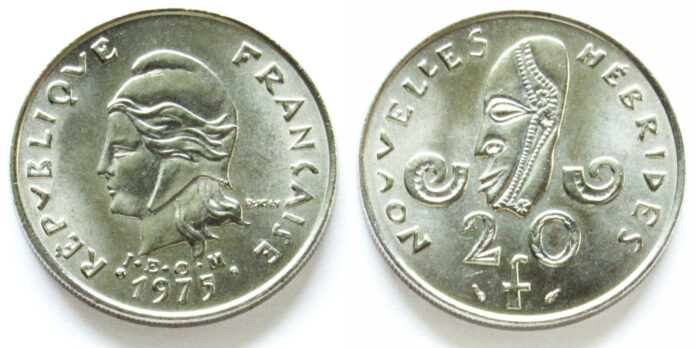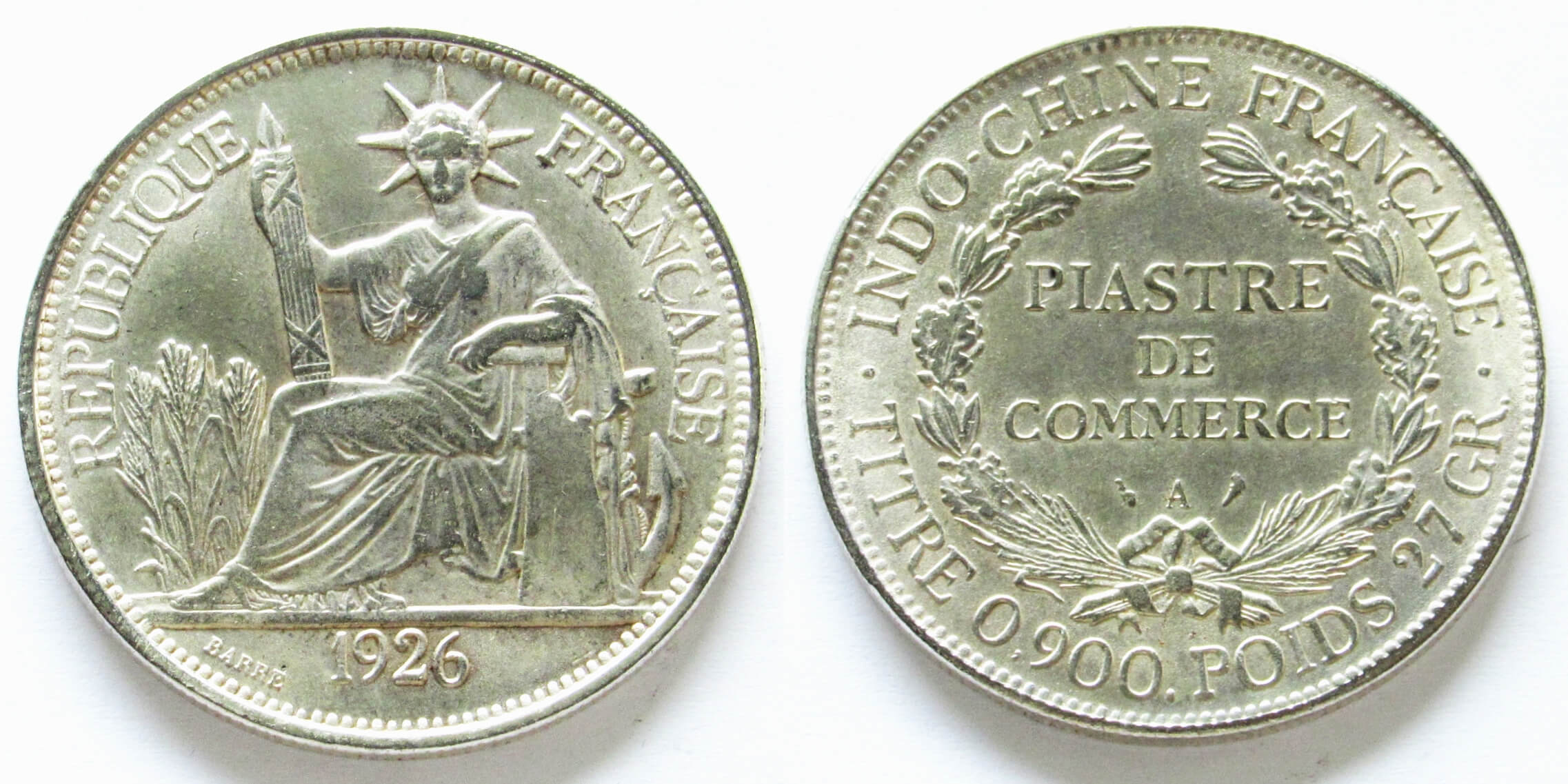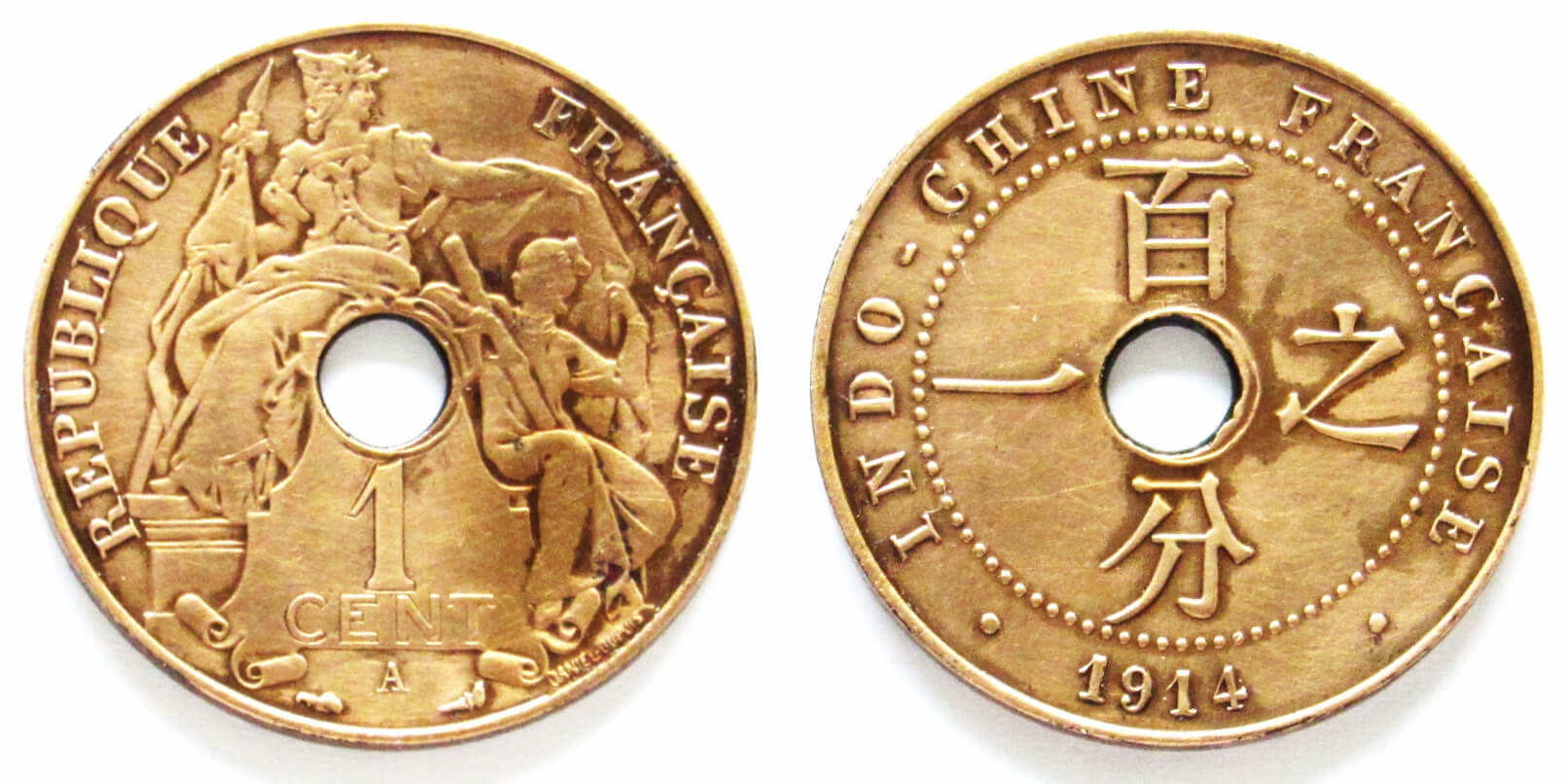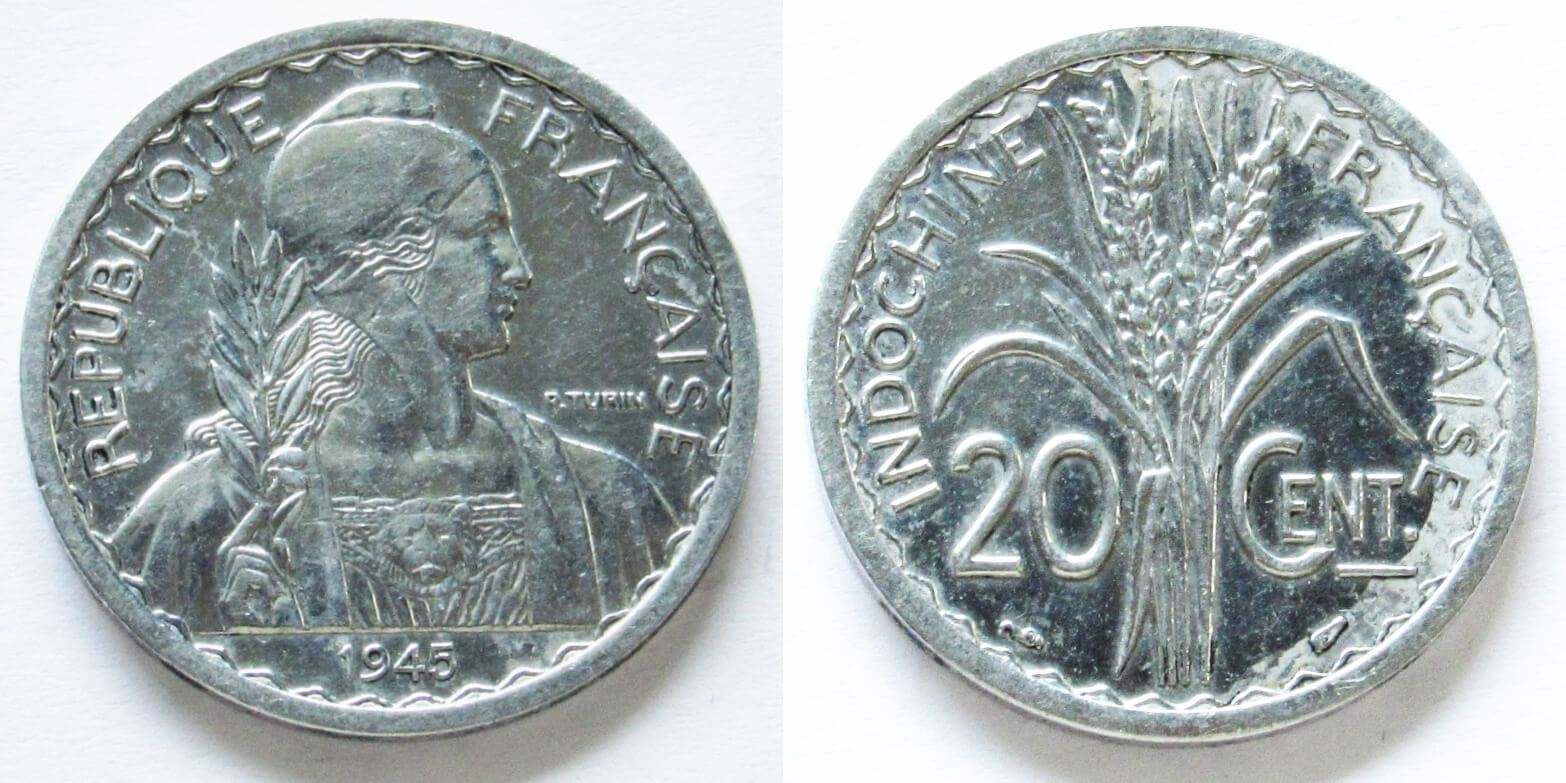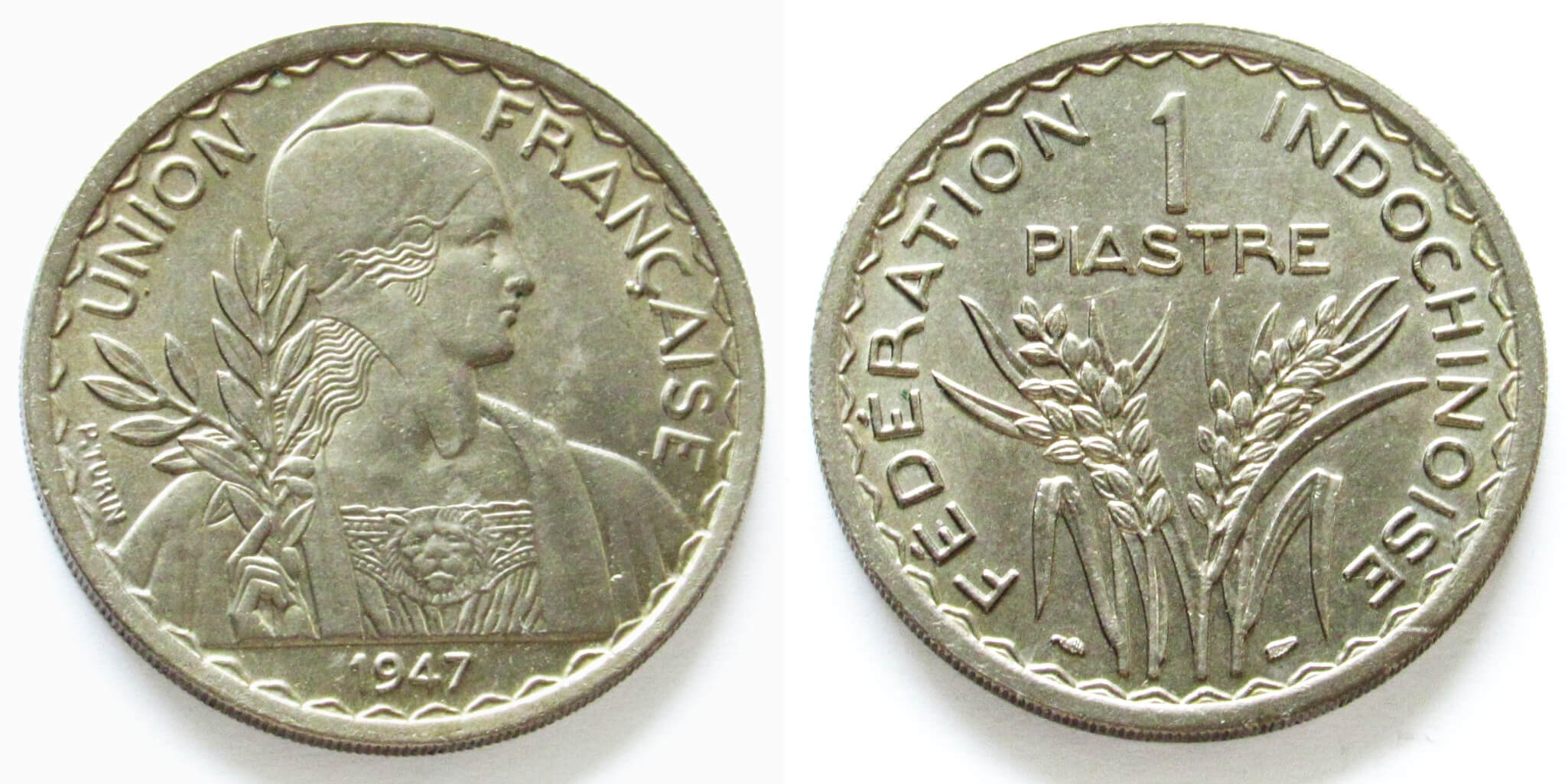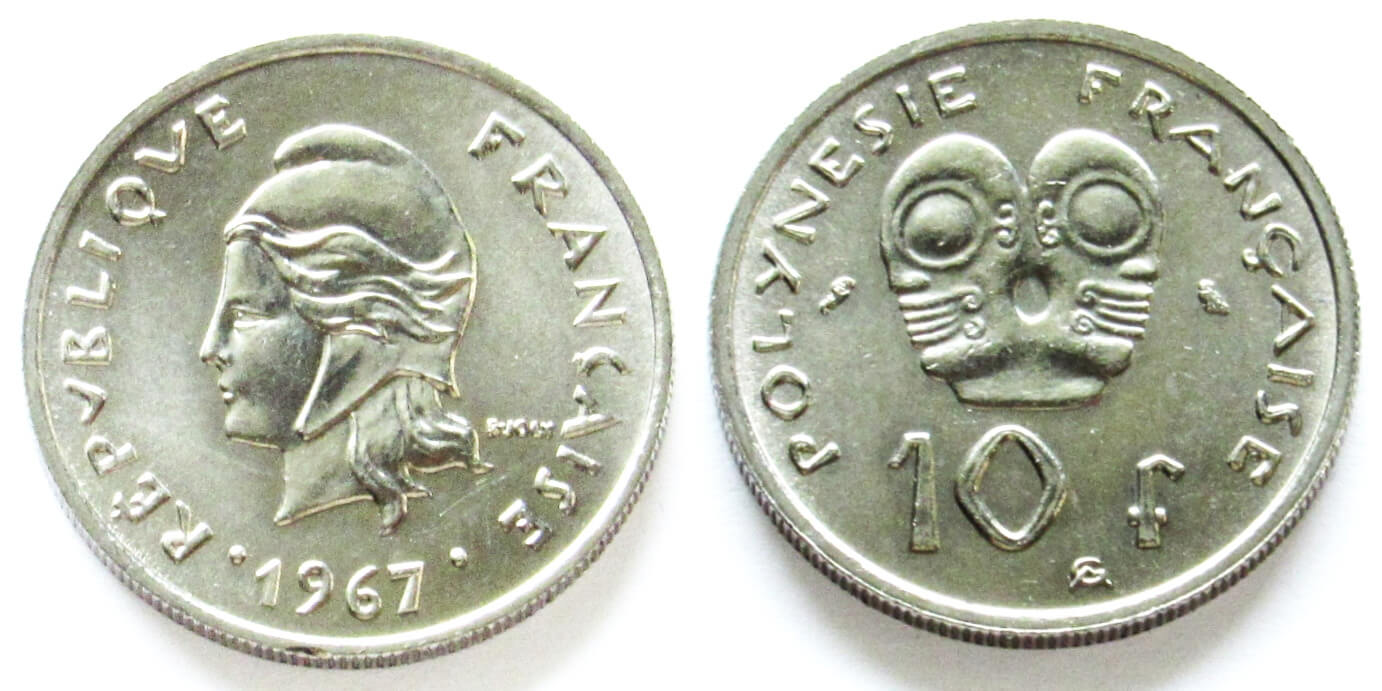Here you can find the first part of this article.
Marianne for Colonies in Southeast Asia
Colonial money, too, makes use of Marianne to represent unity, thus referring to the imperial attitude of the French state, according to which the practices, theories and rules of conduct of the dominant centre are imposed on the governed distant territories (German wikipedia: Imperialismus, adapted from Edward Said). The fact that French world power policies included a rather unrestrained use of military force was illustrated by extremely brutal wars that preceded the independence of Algeria and the Southeast Asian states in particular.
Particularly in French Indochina, both the allegory of Marianne and, especially from 1885 to 1936, that of the Republic – equipped with a crown of rays (a reference to the Statue of Liberty that had already been given to the USA in 1865 in honour of its independence and that had been erected in New York Harbor in 1886) and a bundle of rods – were used as coin motifs to support the desired idea of unity on coins. The image of Marianne does not appear again until 1896 or rather 1923 – and can be understood as a softened version of the quite hegemonic image of the Republic. In the process, the two images merged. Above all, the depiction on 1-centime pieces (1896 to 1939) is very reminiscent of the depiction of Minerva on centime coins (1897 to 1921) that circulated in France at the same time and were created by the same engraver. While victorious Minerva protected the young republic on small change circulating in France, on colonial money the personification of France, alias Marianne, sitting elevated on the left, takes the local personification of the Empire of Vietnam, alias Annam quoc, sitting lower on the right, under her protective coat – an image that we are familiar with from the protective Madonna of the Catholic Church. On later issues, which were valid until the time of the Indochinese Federation from 1946 to 1954, Marianne carries an olive branch, thus virtually asking for peace in the common territory or federation.
The constitution of the Fourth Republic had already been adopted by referendum on 13 October 1946. The post-war period was marked not only by France’s resurgence in world politics but also by the disintegration of the colonial empire. The First Indochina War (1946 to 1954) ended with the Battle of Điện Biên Phủ and the loss of all French colonies in Southeast Asia.
Marianne for Other Former Colonies and French Overseas Territories
A few small territories of the former French colonial empire are still part of France or connected with France today. The legal status of this connection is not always the same. Guadeloupe, Guyane, Martinique, Mayotte and Reúnion are parts of France and have been French regions for 55 years. Accordingly, they introduced the Euro in 1999/2002.
The archipelago of Saint Pierre and Miquelon is the remainder of the former colony of New France off the Canadian coast. An overseas collectivity of France (COM = Collectivité d’outre-mer), it is not part of the European customs territory although they use the Euro.
Regarding other territories, there is still no consensus on what the relationship with France should look like. For example, French Polynesia with its main island of Tahiti (formerly French Oceania), has been on the UN decolonisation list since 2003 (renewed in 2013) to the annoyance of France, whereupon France changed the territory’s status and made it an overseas country (POM = Pays d’outre-mer). This means that the territory is not part of the EU while its inhabitants still are French citizens and can therefore participate in elections to the European Parliament. The position of the local government and the local president were strengthened; France is still responsible for foreign policy, justice, defence, domestic security and the monetary system
According to articles 76 and 77 of the French constitution, New Caledonia (Kanaky) is an overseas community with special status (collectivité sui generis). The independence movement has repeatedly planned referendums on the further status of the islands.
The former British-French Condominium of New Hebrides became the independent Republic of Vanuatu in 1980.
Conclusion
The self-confident, female allegory on 20th-century French coins that were minted for colonies is usually referred to as Marianne in coin catalogues and other publications. Very often, however, she only wears the Phrygian cap – sometimes with cockade, which identifies her as militant-revolutionary Liberty. All other attributes of the Republic (oak leaves, grain, laurel, olive branch), which complete the image of Marianne in her motherland, are often missing.
However, the iconographic statements of the coin designs are in stark contrast to the reality of foreign domination experienced by colonized territories. The image of the national allegory Marianne on the money of colonial rulers that called for unity could not achieve anything or could even be understood as a mockery due to fundamental inequalities: a unity of equal people with equal rights and duties never existed in the French colonial empire – a fact that continues to burden the French society today, also due to decolonisation migrations (Hettinger & Marfaing 2005). If they were understood at all by a foreign culture, the insignia of liberty used in coinage only made people all the more aware of the lack of freedom, the oppression and exploitation they experienced. Thus, Marianne on colonial money no longer represented the resistant strength of a self-confident people, she illustrated the autocratic and inhuman claim to power of imperialistic France.
After World War II, the attitude towards nations and nation-states changed as Europeans experienced how expansive and exaggerated forms of nationalism could look like. This paved the way for a newly emerging European sense of community at the expense of national consciousness. The situation was different for the young states that emerged from former colonial territories outside Europe. The borders drawn by colonial powers often ignored old tribal, religious or cultural boundaries, which continues to create conflicts to this day.
Bibliography
arte (10 April 2005). Das Symbol: Marianne (Karambolage 47). http://sites.arte.tv/ karambolage/de/das-symbol-marianne-karambolage
Hettinger, Holger interviewed by Marfaing, Laurence (8 November 2005). Bevölkerung aus ehemaligen Kolonien wird in Frankreich nicht anerkannt. Deutschlandfunk Kultur: https://www.deutschlandfunkkultur.de/.
Nogarède, Annette (16 April 2014). Wirtschaftliche Entwicklung, Nationalismus und Imperialismus: Die tieferen Ursachen des Ersten Weltkrieges. In Agentur für Bildung – Geschichte. Politik und Medien e.V. Berlin (ed), Lernen aus der Geschichte. http://lernen-aus-der-geschichte.de/Lernen-und-Lehren/content/11711.
Sturm, Gabriele (2013). Die Personifikation der Freiheit im Münzbild seit Ende des 18. Jahrhunderts (Der Steckenreiter – eine zeitgemäße Münzbelustigung für vergnügliche Nebenstunden, Folge 89). Bonn: Numismatische Gesellschaft Bonner Münzfreunde e.V. in Deutsche Numismatische Gesellschaft.
German Wikipedia, the free encyclopedia (consulted in November 2016). CFA-Franc-Zone / Frankreich / Französisch-Polynesien / Französische Kolonien / Imperialismus / Kolonialismus / Marianne / Nation / Neukaledonien / Personifikation. https://de.wikipedia.org.
This text is mainly a translation of a contribution published in 2016 in an association brochure: Sturm, Gabriele (2016). Die französische Nationalallegorie Marianne (Der Steckenreiter – eine zeitgemäße Münzbelustigung für vergnügliche Nebenstunden, Folge 108). Bonn: Numismatische Gesellschaft Bonner Münzfreunde e.V. in Deutsche Numismatische Gesellschaft. This text and more publications are available on the website of Bonner Münzfreunde.
Here you can find the first part of Gabriele Sturm’s article. Here (part 1) and here (part 2) you can find articles about Marianne on French coins written by the same author.



